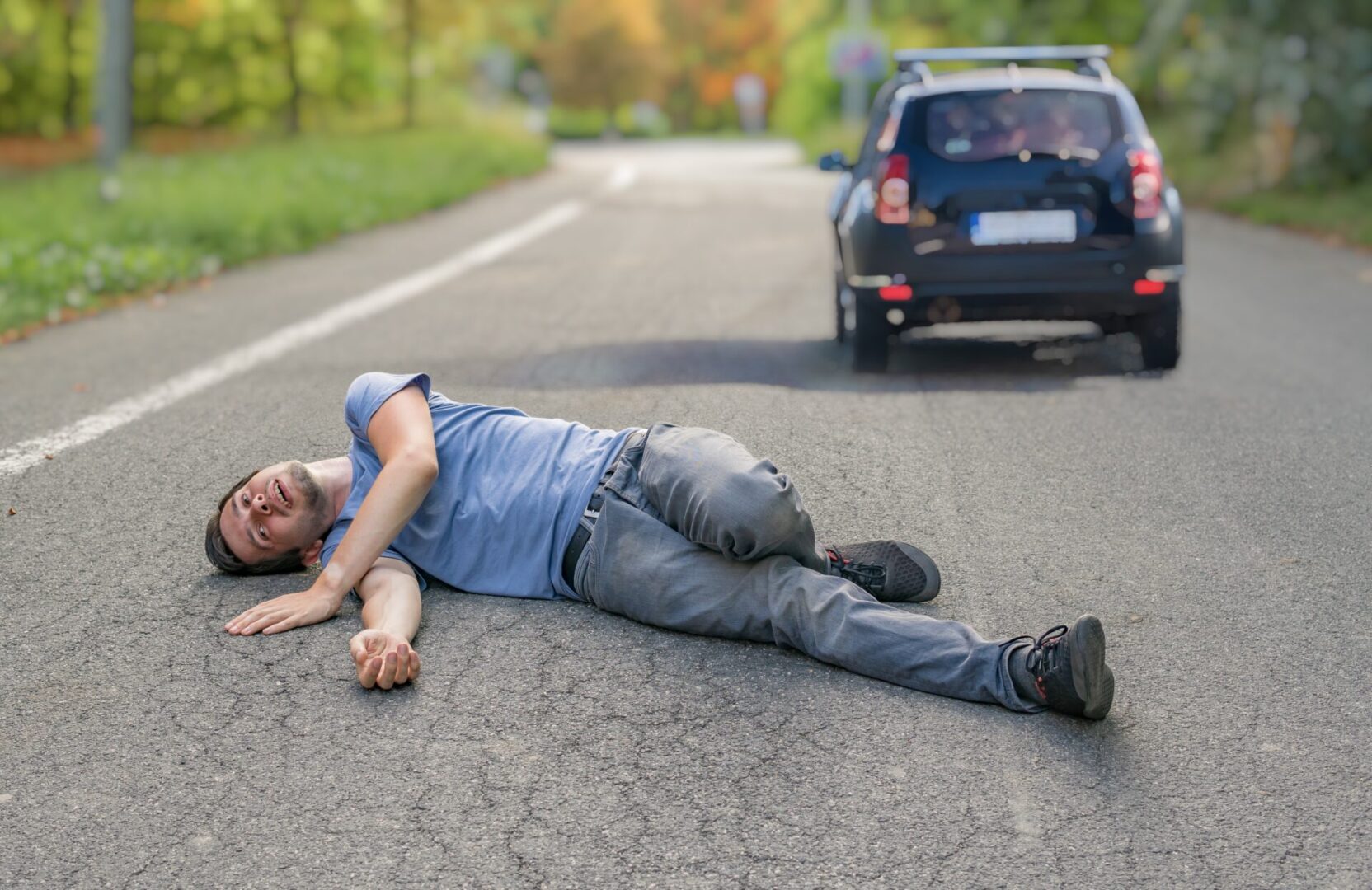DUI HIT & RUN ENHANCEMENTS
ORANGE COUNTY'S "BEST" OR "TOP-RATED" DUI DEFENSE LAWYERS RATED BY SUPER LAWYERS, ORANGE COUNTY'S "TOP-RATED" DUI DEFENSE ATTORNEYS
More Information About Hit and Run DUI Cases in California
ORANGE COUNTY DUI HIT & RUN CHARGES
If only the law were as easy as the cartoon. Being charged with hit and run, or CVC 20002, is a crime with far reaching consequences as it can be considered a crime of moral turpitude in background checks.
The law requires a person to exchange information with a party or property whom he/she "hit". If the person fails to do so that person essentially chose to "run"; thus constituting "hit and run". If this same person were also DUI, there will likely be "DUI Hit & Run charges". DUI Hit & Run charges typically face harsher penalties or punishment on top of those that one would have seen if it were just a hit & run charge or just a DUI charge separately as opposed to DUI Hit & Run charges. The combination of the two charges is what make one's exposure that much greater when facing DUI Hit & Run charges.

VEHICLE CODE SECTION 2002 - HIT & RUN
California Vehicle Code Section 20002 makes it a misdemeanor to fail to stop at the scene of an accident with property damage only and requires, like CVC § 16025, that the driver supply his or her name and address and that of the owner.
In addition, Vehicle Code § 20002 requires that: “[u]pon locating the driver of any other vehicle involved, if requested,” presentation of:
1. Driver’s license.
2. Vehicle registration.
3. Vehicle owner’s driver’s license or other identification, if present.
In the alternative to all the requirements of CVC § 20002, except stopping at the scene, one may leave a “note” on the other vehicle with the name and address of the driver and owner, the circumstances of what happened, and notification to the police without unnecessary delay.
Both CVC §§ 16025 and 20002 require the name and address of the driver and owner. Section 16025 requires additional information in all cases. Section 20002 requires different additional information, but only “upon locating the driver of any other vehicle involved, and only upon being requested.”
So it therefore appears apparent that CVC §§ 16025 and 20002 have some overlaps. Thus, in each case it is necessary to carefully compare the facts with the two statutes and determine which is more applicable. Distinguishing points relate to such things as who is present and whether or not certain information is requested. One statute specifically requires stopping; the other one only implies that duty. Variations such as these are determinative of which statute shall apply.
In People v. Scheer (1998) 68 Cal.App.4th 1009, the court held that evidence of a prior conviction for evading arrest in a car was not admissible to prove intent to flee the scene in a later hit and run case. The decision also held that a person must stop to render aid even if bystanders are also doing so.
VEHICLE CODE SECTIONS: 20001, 20003, 20004
California Vehicle Code Section 20001 makes it a felony or misdemeanor ("wobbler") to fail to comply with CVC §§ 20003 (to identify oneself and render aid and assistance) and 20004 (in the event of death, report the accident to the police even if they are not present), where one is the driver of a vehicle involved in an accident where someone is injured or killed. CALJIC 12.70 and CALCRIM 2140 et seq. are the jury instructions for this offense.
An enhancement under Penal Code § 12022.7 only applies to the infliction of great bodily injury in the commission of a felony or attempted felony. Thus, People v. Valdez (2010) 189 Cal.App.4th 82 held that the enhancement does not apply to a felony hit and run under Vehicle Code § 20001 where the injuries were the result of the accident and not the felony conduct of leaving the scene. The Court did note that the enhancement could apply if the failure to stop itself caused Great Bodily Injury or exacerbated the injury. See: Bailey v. Superior Court (1970) 4 Cal.App.3rd 513; People v. Scheer (1998) 68 Cal.App.4th 1009 (dragging in the act of flight).
Also noted that CALJIC No. 12.76 applies the duty to stop and render aid to injured parties to a non-driving owner who is present within and in control of the vehicle at the time of the accident. See People v. Mace (2011) 198 Cal.App.4th 875.
Penal Code § 803(j) was added, effective 1/1/2014, which provides that a prosecution for CVC § 20001(b)(2) [death, permanent or serious injury] may be filed within three years under Penal Code § 801 [felony] or one year under Penal Code § 802 [misdemeanor] or, one year after the suspect is initially identified by law enforcement as a suspect, whichever is later but, in no case longer than six years after the offense.
If you were charged with hit and run in California, particularly Southern California, constituting Orange County, San Diego County, Los Angeles County, Riverside County and San Bernardino County. The Criminal Defense Lawyers of The SoCal Law Network have obtained tremendous results in dealing with cases involving hit and run allegations.
If you need an experienced attorney to defend you against a hit and run charge, call The SoCal Law Network at: 949-305-0343 or complete our Contact Form to receive a return call or email.
Orange County DUI Attorneys Providing DUI Defense in Orange County - Laguna Hills, Laguna Beach, Orange
CALL NOW!
FREE CONSULTATION: (949) 235-2250



